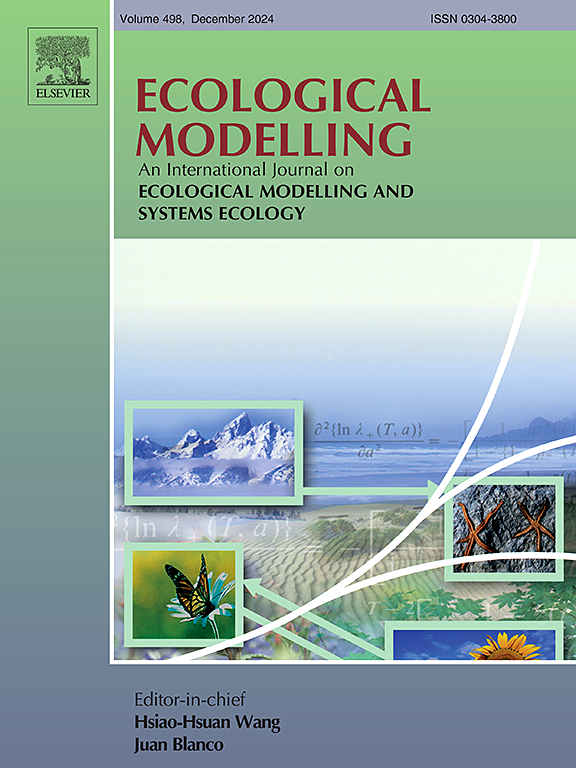Estimating landscape intensity through farming practices: An integrative and flexible approach to modelling farming intensity from field to landscape
IF 2.6
3区 环境科学与生态学
Q2 ECOLOGY
引用次数: 0
Abstract
Context
Landscape intensity is a major driver of biodiversity and ecosystem functioning in agricultural landscapes, and is often used to inform environmental quality. It is commonly described by land cover alone, as farming practices are assumed to be correlated with crop types. Despite their potential impact on field quality, distribution of farming practices at landscape scale is poorly understood, due to the lack of methods for summarizing the numerous farming practices at field and landscape levels.
Objectives
The main objective was to develop a modelling approach that synthesizes the intensity of farming practices at field and landscape levels. Additionally, we sought to assess the importance of considering farming practices in addition to land cover when studying landscape quality.
Methods
Using survey data collected in two contrasting French agricultural areas, we selected and summarized PCA components using an equation adapted from Herzog et al. (2006; DOI: 10.1016/j.eja.2005.07.006) to compute practice intensity indices integrating levels of fertilization, pesticides, tillage, mowing/harvesting, or of all practices. We compared the distribution of these indices between crops, landscapes, and study areas. Finally, we compared landscape patch richness as an indicator of their (dis)similarities on the basis of land cover, intensity, and the two superimposed, comparing the use of 2 to 20 intensity classes.
Results and conclusion
We found significant differences between land cover intensities, which were not consistent depending on the level of practice considered. Furthermore, for similar crops, we found significant differences between areas. This shows that land cover may not be a good indicator of practice intensity at field level. Moreover, landscape structure described by patch richness differs significantly according to the classification systems studied, and depends on the number of intensity classes considered, which we likened to the sensitivity of a response variable. Thus, landscape intensity based on land cover does not effectively describe that caused by agricultural practices either.
Significance
The method we developed allows studying farming practice intensity at the landscape scale, using any number of numerical descriptors of the intensity of farming practices, to be used flexibly, depending on the objectives and hypotheses of the researchers and the finesse of the practice data available. It also demonstrates its value insofar as land cover proves insufficient to describe the distribution of farming practices between fields and, consequently, the resulting landscape quality. Our method can be used to study a wide range of phenomena linked to landscape intensity, and to reconsider previous assumptions based solely on land cover.
求助全文
约1分钟内获得全文
求助全文
来源期刊

Ecological Modelling
环境科学-生态学
CiteScore
5.60
自引率
6.50%
发文量
259
审稿时长
69 days
期刊介绍:
The journal is concerned with the use of mathematical models and systems analysis for the description of ecological processes and for the sustainable management of resources. Human activity and well-being are dependent on and integrated with the functioning of ecosystems and the services they provide. We aim to understand these basic ecosystem functions using mathematical and conceptual modelling, systems analysis, thermodynamics, computer simulations, and ecological theory. This leads to a preference for process-based models embedded in theory with explicit causative agents as opposed to strictly statistical or correlative descriptions. These modelling methods can be applied to a wide spectrum of issues ranging from basic ecology to human ecology to socio-ecological systems. The journal welcomes research articles, short communications, review articles, letters to the editor, book reviews, and other communications. The journal also supports the activities of the [International Society of Ecological Modelling (ISEM)](http://www.isemna.org/).
 求助内容:
求助内容: 应助结果提醒方式:
应助结果提醒方式:


